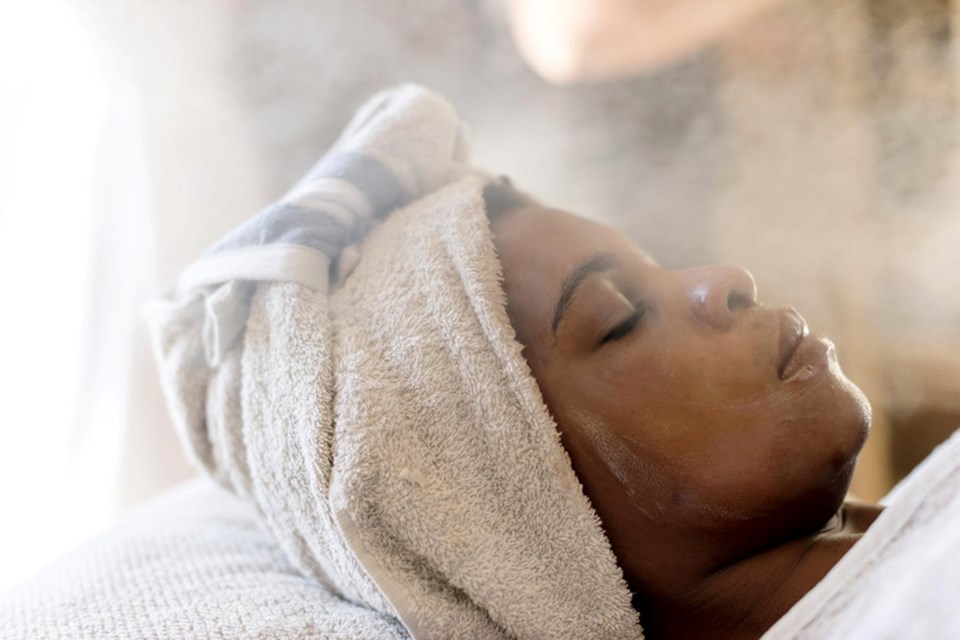Winter air can mean drier conditions inside our homes – not only is the heater running non-stop, but cold air generally carries less moisture to begin with. It’s vital for your family’s health and comfort to maintain a consistent level of relative humidity in your home; air that’s too dry can make it harder to breathe and dry out your skin and hair. Humidifiers are an easy way to keep everything comfortable throughout the winter season - having them on hand can also help ease symptoms from colds and flus (such as cough and dry throat). Here are four things you need to know about your home’s humidity and how to purchase and maintain a humidifier that’s right for you.
Ideal Home Humidity
In general, the colder it is outside, the lower your indoor relative humidity should be. In the winter, aim for about 40%-45% relative humidity if your family doesn’t have any health conditions. For those with some skin conditions like eczema, a slightly higher relative humidity may be appropriate. At the same time, those with asthma or allergies should aim to keep their homes on the lower end of this range so that the air doesn’t exacerbate symptoms. A home that is too humid can harbour bacteria and promote mold and mildew or create excess condensation on windows and electronics. The best way to monitor your home’s relative humidity is with a hygrometer (like this affordable option).
Cold vs. Warm Mist
While all humidifiers complete the same primary task (add moisture to the air), the difference between those with cool mist and warm mist is important. Warm mist humidifiers are often quieter because they don’t use fans to create the mist (instead, they boil the water and steam releases), and they better reduce germs and bacteria because of the boiling process. It’s a good idea for individuals with breathing conditions to use warm mist. However, for safety, warm mist units should never be used in a child’s room – the steam could scald. Also, warm mist units can use more energy than a cool mist option. On the flip side, cool mist humidifiers can spread bacteria and germs into the air (which can be counteracted by cleaning the unit thoroughly) and can make cold winter air feel even cooler. While the fans in cool mist units are often noisy, many ultrasonic models (which use vibrations to create the mist rather than a fan) are popular and affordable now. Cool mist units are also more energy-efficient and safe to use around children and pets.
 Moyo Studio via gettyimages.com
Moyo Studio via gettyimages.comCleaning
Make sure to clean your humidifiers thoroughly every week (and empty standing water daily); buildup from mineral deposits can clog the mechanism, and moisture on surfaces will start growing algae. The easiest way to clean it is to drain the water and then let it sit with a diluted vinegar solution. Rinse with hot water after the vinegar has been soaking for 5-10 minutes. Make sure you let all of the components air-dry completely before reassembling. You can also look for humidifier accessories (like this cleaning tablet) to help reduce buildup from microorganisms. Models with unusual shapes and lots of nooks and crannies are harder to clean, but using distilled or purified water can help minimize mineral deposits and make cleaning easier.
What to Purchase
There are two primary decisions you’ll have to make before purchasing a humidifier: what capacity you need and whether you want warm or cool mist. Capacity is based on both room size and duration of use at a single time. For example, if you’re running it all night in a large bedroom, then you’ll want at least a gallon tank so that you don’t worry about the water running out at 2am - many humidifiers will give you a duration estimate. Once you’ve narrowed your choices based on capacity and mist temperature, then you have many other options to consider: How easy is the unit to clean? Does it have a bright light or loud sound that will impact sleep? Does the unit have a built-in humidistat? Are there additional accessories that you can add to it, like vapour pads or essential oils? A good, basic cool mist option for bedrooms is the Crane Drop; it’s very easy to clean and doesn’t have harsh lights or sounds that could deter sleep. For nurseries, consider this popular Levoit model that has an “intelligent sleep mode.” If you’re looking for something high-tech, check out this HuPro unit that will automatically adjust the mist based on the humidity level you set and can offer warm and/or cool options - its extra-large capacity is perfect for common area use!
Taking the time to research and invest in humidifiers for your family this season will give you more comfortable days in the cold months ahead!
 Caption
CaptionThis story was made possible by our Community Partners Program. Thank you NWR Painting Inc. for helping to expand local news coverage in the Bow Valley. Learn more.




